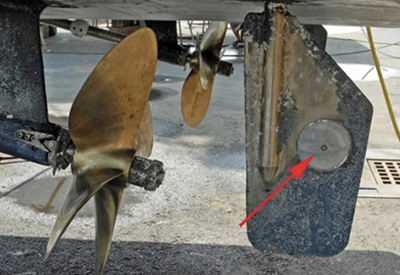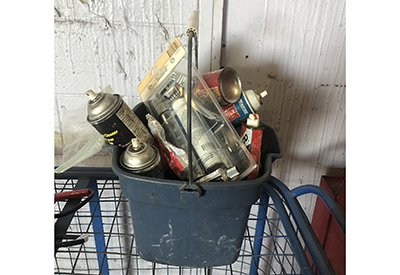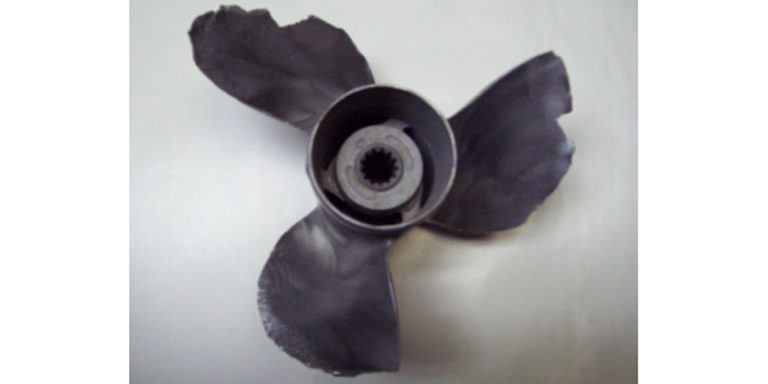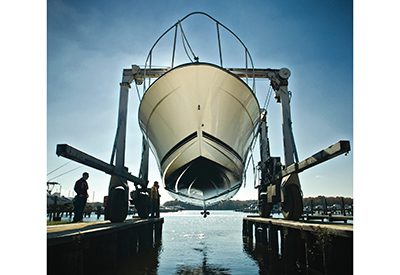Ask Andrew: Is Sea Speed the Answer?
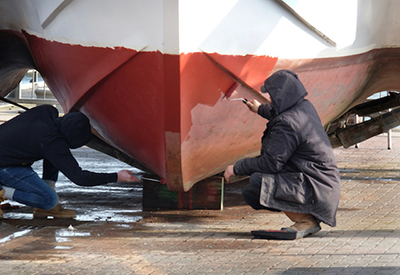
Every spring, boaters gather in paint splattered overalls to discuss their opinions on antifouling.
Jun 8, 2023
Every spring, boaters gather in paint splattered overalls to discuss their opinions on antifouling.
My editor asked me to dive into something a newer product – and new for us: I’m writing sight-unseen. Typically, when doing a product review, it’s something that I use or test myself and I can report on it first-hand. In this case, I’m breaking down some myths and marketing jargon to (hopefully) let you make an educated decision on what’s right for you.
Whenever looking at a new product, you need to lift the veil of the marketing department to get a true sense of what is being reviewed. I’m going to try to go behind the curtain for you, while being realistic in what you need to know. Lets dive in and start by looking at antifouling in general:
Antifouling is the treatment of a boat’s hull with a paint or similar substance designed to prevent fouling. Fouling is the accumulation of microorganisms, plants, algae or animals on wetted surfaces. Antifouling paint is applied to prevent this build-up.
The age-old dilemma is balancing speed: The accumulation of fouling slows a boat down. But the addition of antifouling paint does the same. So antifouling paint has to be as thin and smooth as possible to create as little drag as possible. But the paint has to be thick enough so that it prevents fouling.
Over the years, I’ve boiled this down to a couple of salient points based on the way that the majority of us look at antifouling:
- It’s necessary for most of us
- If it isn’t ‘too’ bad, leave it for another year
- Stick with the product that you know. If you’ve been using it for years, its tried and tested and it will be tough to get you to change.
- Only sand and re-paint the underwater portion of the hull if:
- The pitting is so horrible that the highs and lows are causing issues
- You’re not sure of what the original coating is, and therefore aren’t sure what’s compatible to paint over top!
Antifouling is often divided into two types:
Hard – a hard modified epoxy. Its durable and doesn’t wear off. The outer layer oxidizes and wears over time and becomes less effective at combatting marine growth. This necessitates re-application every year or two. Hard bottom paints are ideal for boats that sit for long periods of time, or have little water movement around them.
Ablative – these are ‘self-polishing’ – they are soft, and the surface of the paint wears off at a controlled rate (almost like a bar of soap).
In both cases, the active ingredients aren’t ideal for the environment (or people). Appropriate PPE when applying includes a full tyvex suit, gloves, respirator and eye protection. The active ingredient is often a copper base.
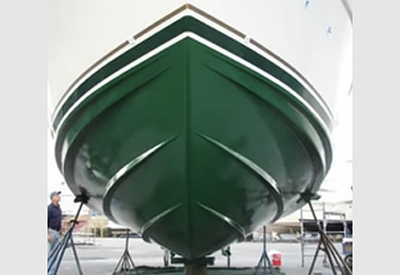 So, what’s new?
So, what’s new?
When compared to traditional antifouling paints, Sea Speed appears revolutionary. Touted as the only hard silicone bottom paint in the world and sold as an alternative to conventional bottom paint. Two key selling points that set it apart from the crowd:
- Its non-toxic, meaning that it doesn’t leach copper into the environment
- It has a 10-year life span
It is suitable for aluminum, gel coat or wooden hulls, and can be scrubbed without releasing any copper or biocides into the surrounding water: It doesn’t polish, deplete or ablate over time. Some reports indicate a 12% savings in fuel consumption based on the lower drag
It sounds like a miracle – and for these advantages, it’s an amazing entrant to the market. The only turn-off for the average boater is the initial cost outlay.
I used the handy online calculator on sea-speed.com to determine how much is required for a 30’ LOA x 9’ beam x 4’ draft. It calculated that 3 steps would be required, with 2 gallons of each product.
Step 1: Base Colour coat – $185 – 2 Gallon Kit
Step 2: Final colour coat – $185 – 2 Gallon Kit
Step 3: Ultra Clear Coat – $445 – 1 Gallon Kit (2 required).
Total bill: $1260 USD x 1.4 = roughly C$1,765.
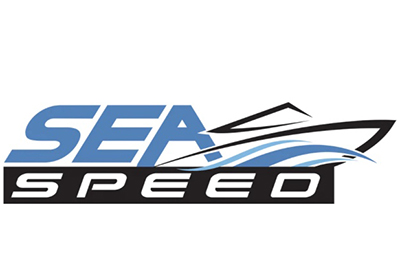 Compare this with annual coating of Interlux VC17. A similar sized boat might use 3 quarts cans, annually for 10 years. This is 30 cans, at an approximate retail price of $100 (West Marine, online) = $3,000. Cut it down to two cans a year and your closer at $2,000.
Compare this with annual coating of Interlux VC17. A similar sized boat might use 3 quarts cans, annually for 10 years. This is 30 cans, at an approximate retail price of $100 (West Marine, online) = $3,000. Cut it down to two cans a year and your closer at $2,000.
Comparing apples-to-apples, Sea Speed has many clear advantages: environmental, smooth movement through the water, price, and length of time between applications
More information can be found at sea-speed.com. I’m looking forward to trying it out.
Happy Boating!
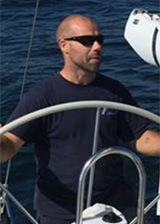 Andrew McDonald is the owner of Lakeside Marine Services – a boat repair/maintenance firm based in Toronto. Andrew has worked in the marine industry for 12 years and is a graduate of the Georgian College ‘Mechanical Techniques – Marine Engine Mechanic’ program.
Andrew McDonald is the owner of Lakeside Marine Services – a boat repair/maintenance firm based in Toronto. Andrew has worked in the marine industry for 12 years and is a graduate of the Georgian College ‘Mechanical Techniques – Marine Engine Mechanic’ program.
Questions or comments for Andrew? Email him directly via: askandrew@lakesidemarineservices.ca

